We pulled up but unfortunately the building was closed. There was a note posted on the window that they were at a doctor's appointment in Denver and wouldn't be back until Thursday (today was Tuesday). Darn.
Gene and Bridget, a young couple who had recently moved to Pueblo from Texas, walked up. They were spending a week here, camping out and looking at the sky every night. So far they hadn't seen any unidentified objects in the sky... just some spectacular storms and clouds... and whatever some hallucinogenic 'medicine' might kick up.
They told us what they knew about the place. The watchtower was opened in 2000 by a woman named Judy Messoline. She chose this spot because she believed it was the location of three linked vortexes. They had also heard the skeleton story but believed it was definitely something other than just a horse.

The 'office' was closed.
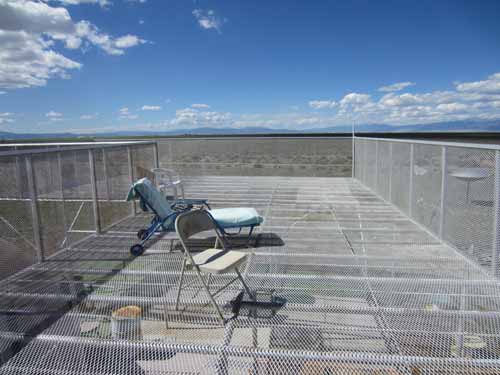
The viewing deck

We could see all the way out to the sand dunes.

Just below us was the spot with the three linked vortexes. People had come from all over the globe to fill it was bizarre objects... most of it primarily junk though.

Wait! Was that an alien in the distance!?? No... just a sandstorm. Darn.
They returned to their campsite while we explored the vortex area.

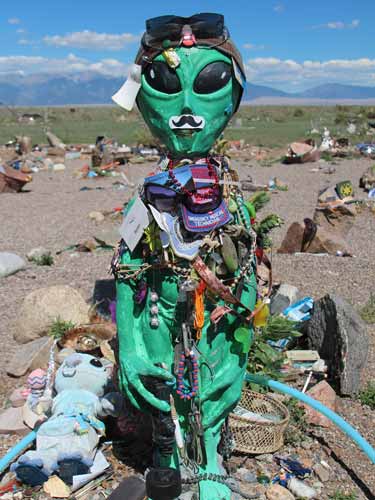




Hey! A bone! Alien?? Horse??... Human?? Oh the mystery of it all!

Me with my new boyfriend
We dropped a donation in the box and continued our journey to the dunes.
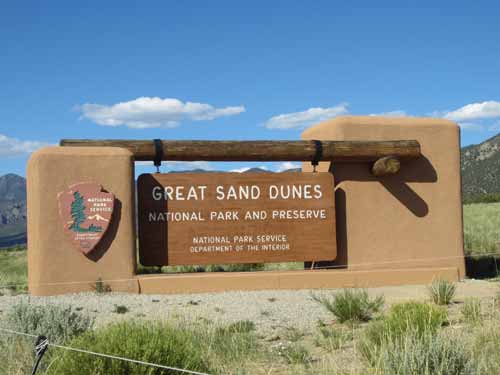
Entering the park



Our first stop was the visitor center.
The dunes and surrounding area became a National Monument in 1932 and was upgraded to National Park status in 2004. Along with the tallest sand dunes in North America, the park also includes alpine lakes and tundra, six peaks over 13,000 feet, ancient spruce and pine forests, grasslands and wetlands.
It is believed that the dunes started forming less than 440,000 years ago. Sand and soil deposits from the Rio Grande (as it flowed through the San Luis Valley) were picked up by westerly winds. When the wind hit the Sangre de Cristo Range, the sand was dropped. This process continued and the dunes grew. Streams from the mountains running along the edges of the dunes carried stray sand downstream. Winds pick it up and blew it back onto the top of the dunes once again.

Winds from both directions keep the sand from escaping.

A model of the San Luis valley (with the dunes on the right)

While the formations have changed slightly, the dunes are relatively stable and remain essentially in the same positions.

Regan attempts to alter the micro dunes.

Various tracks. Creatures range from...

...the small Ord's Kangaroo Rat...

... to the large mountain lion.
We drove to the Pinyon Flats campground and set up the tent. There were numerous people and humongous campers. At one point I had to move the car out of the way as we were setting up so that one of these behemoths could get around the corner to back into a spot.

Camping close to the dunes

We then headed out for an evening stroll. We walked down to the river bed, crossed it, then strolled up one of the small dunes. We began to lose the light so started back.

The dunes loomed in the distance.

Many people were climbing to the top...

... to watch the sun rise from the dune peaks.

At the outskirts of the sandy dunes was still lots of lush plant life.


Rocky Mountain Beeplant attracts both bees and flies.
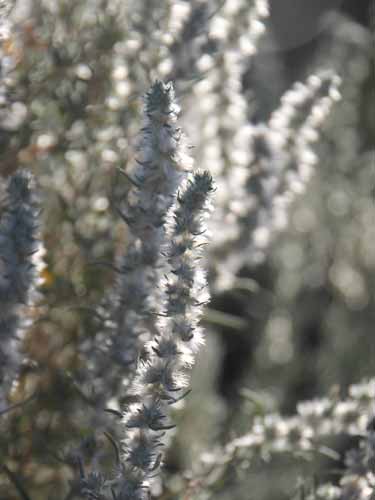

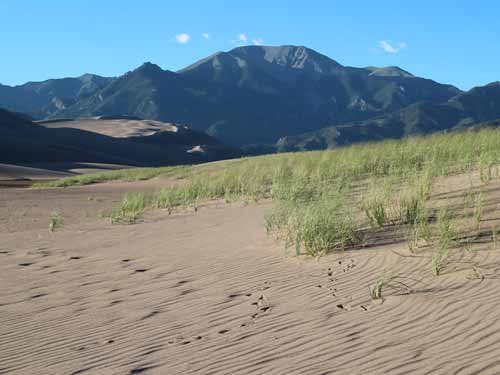
Reaching the end of the vegetation


Evidence of life

The grains of sand came in every color!

The shadows begin to get long...

... for us too!

Crossing Medano Creek




The view back toward the other side

Heading up a small dune


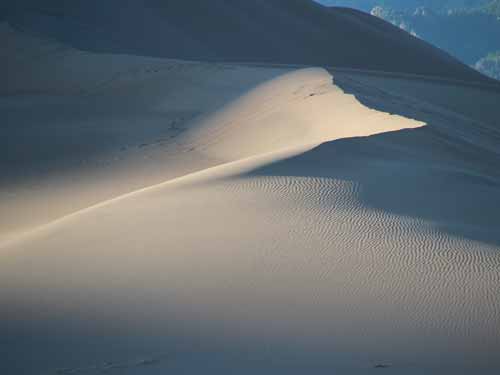
We begin to lose the light...

... and then it is gone.

